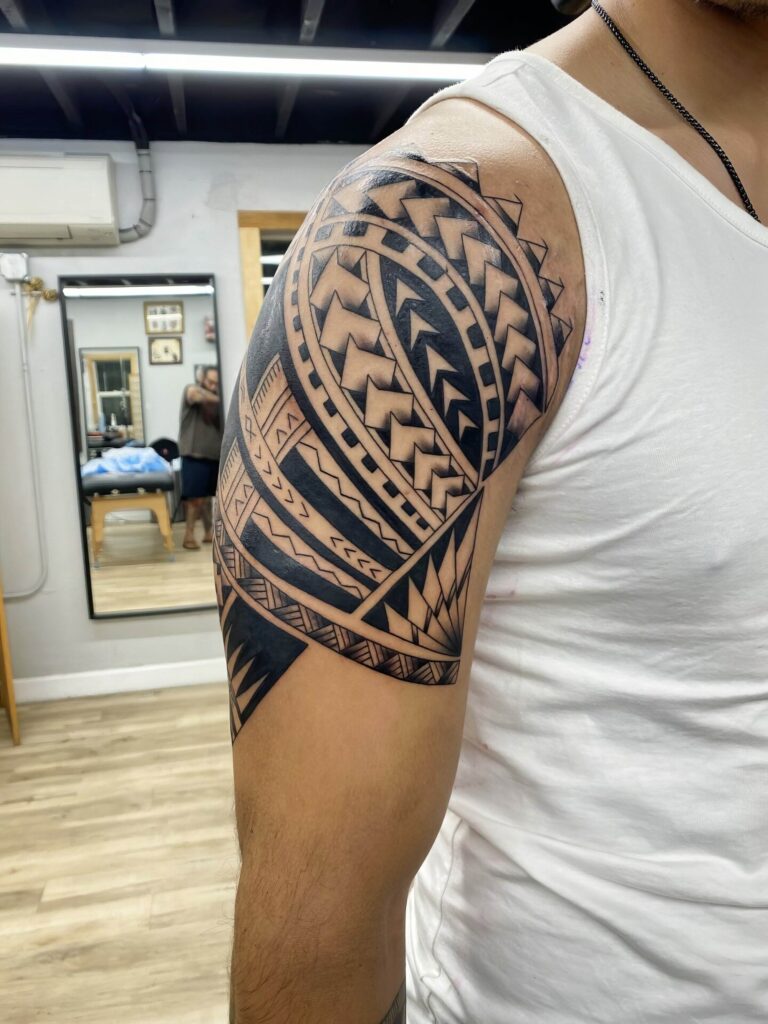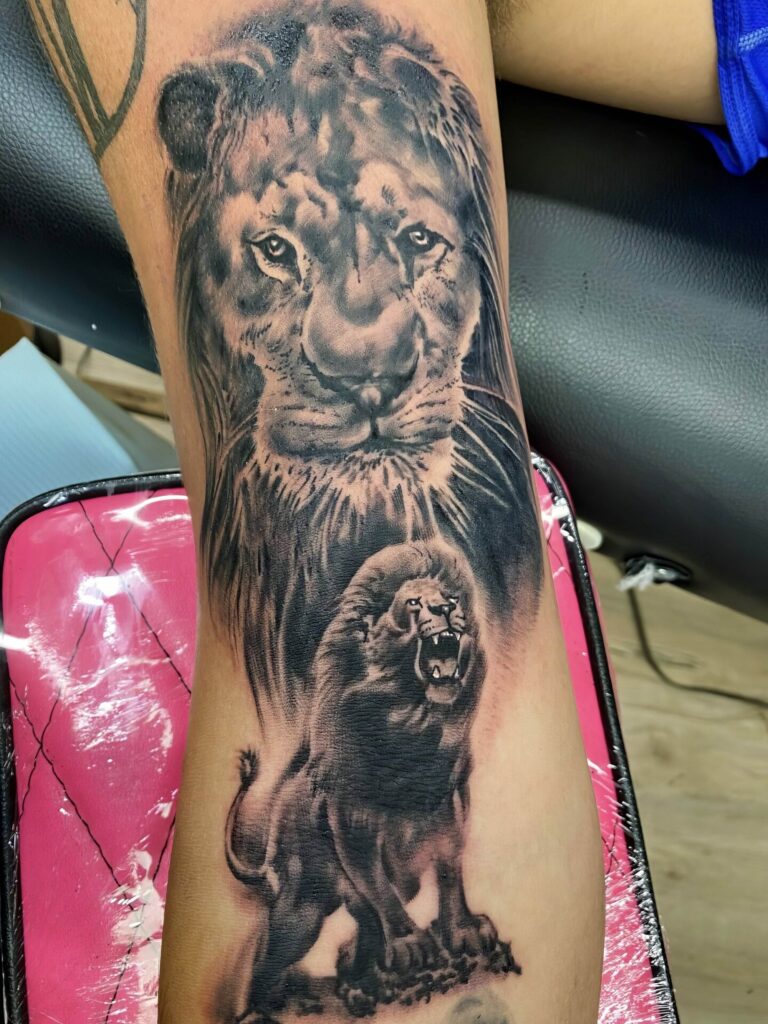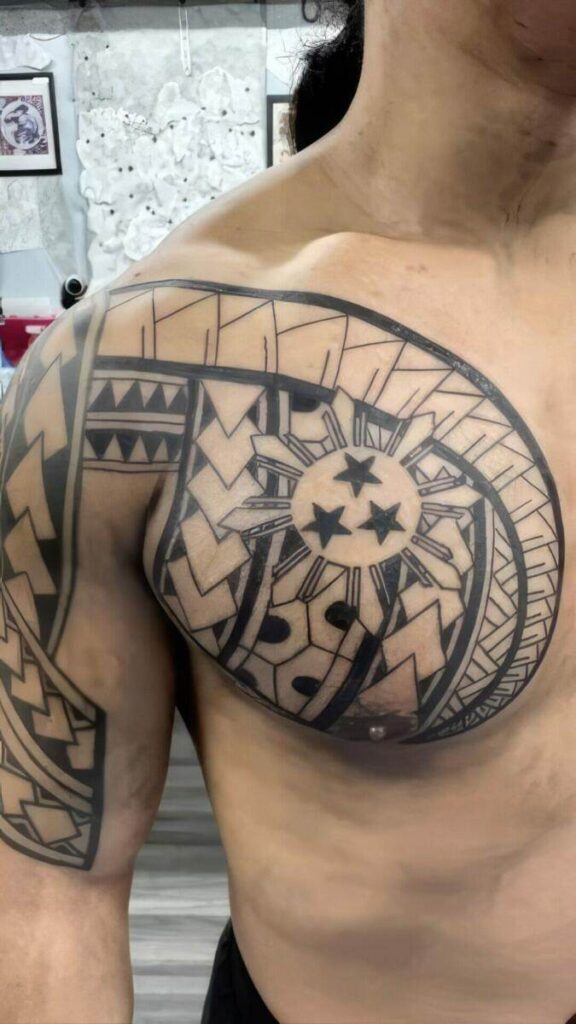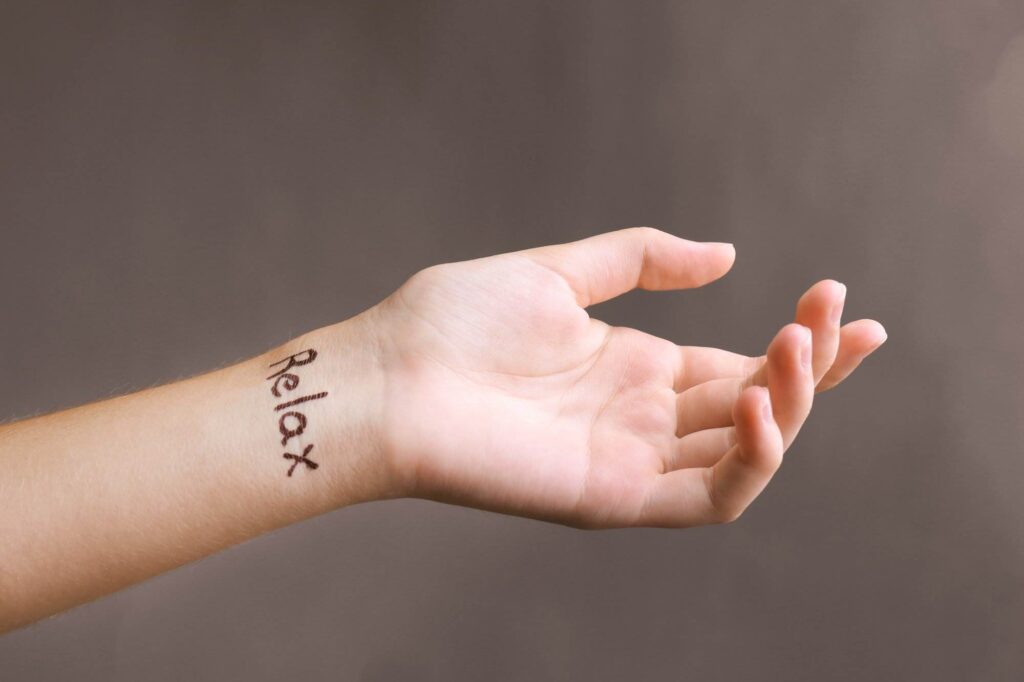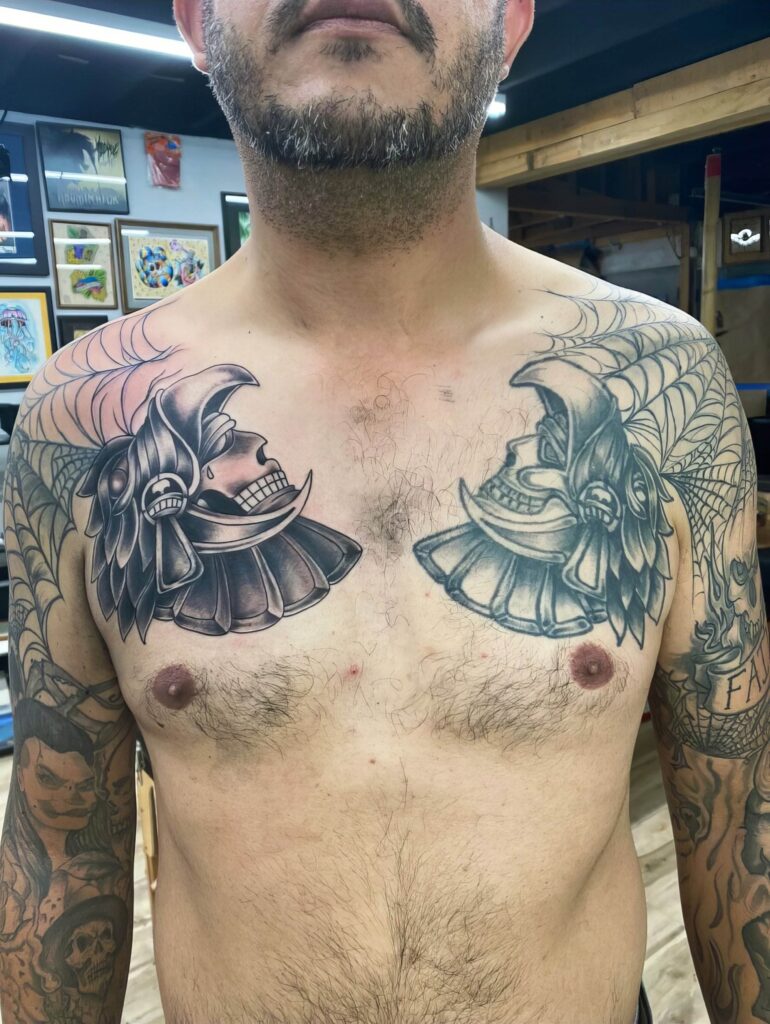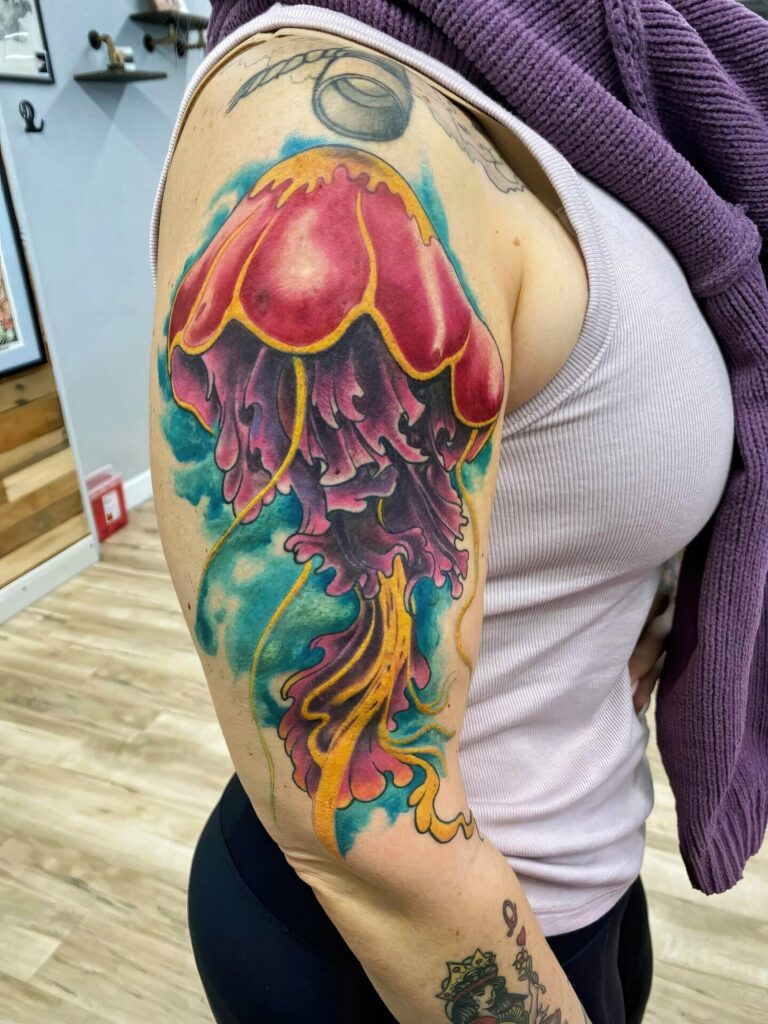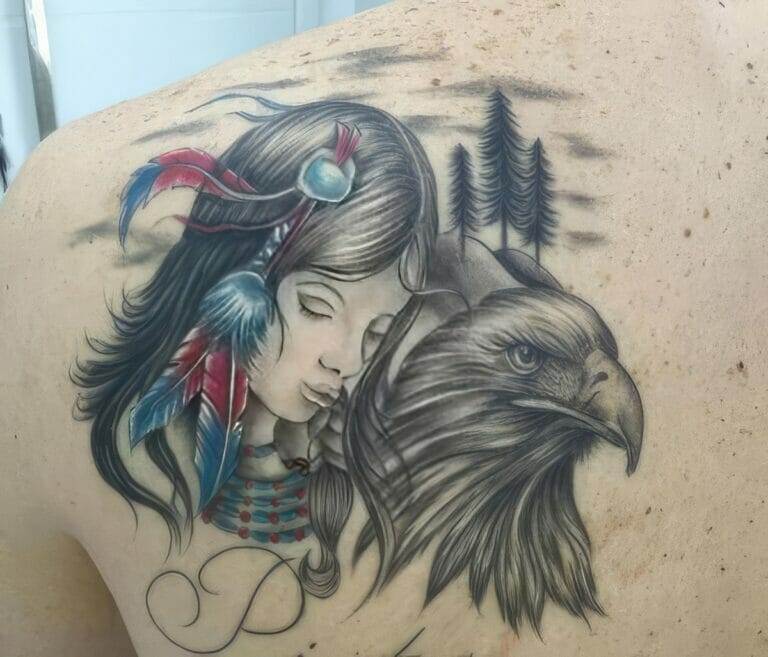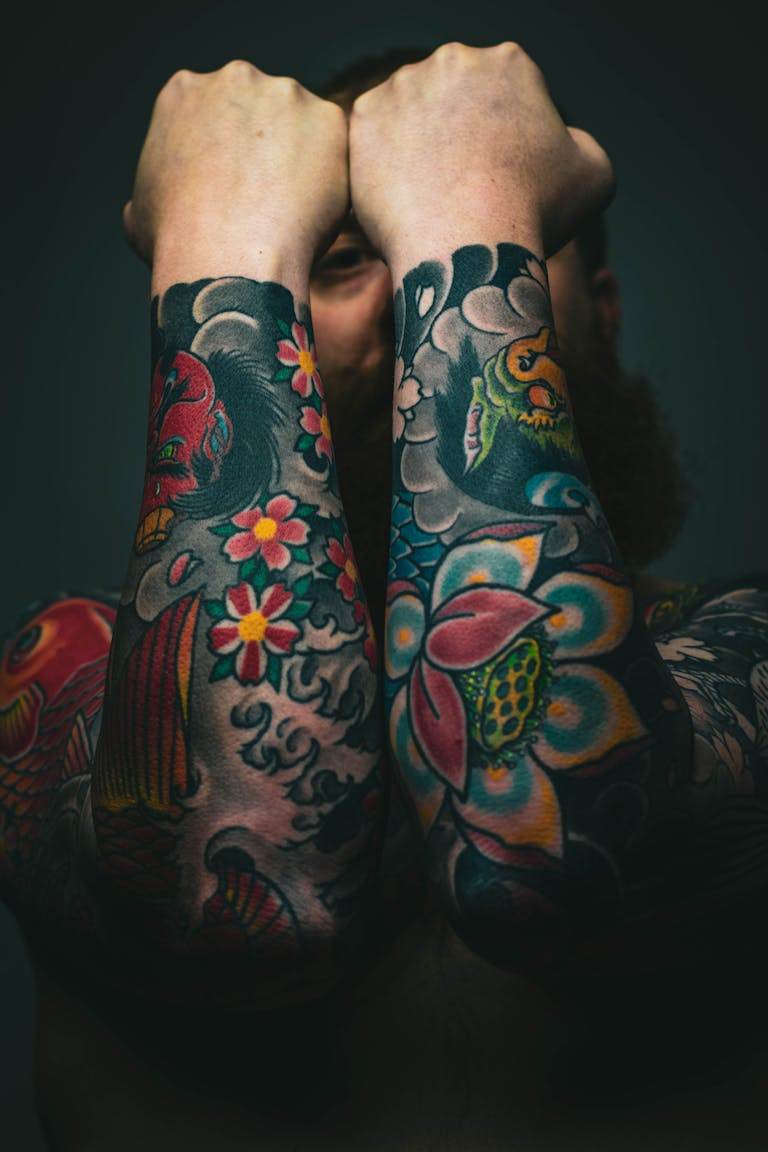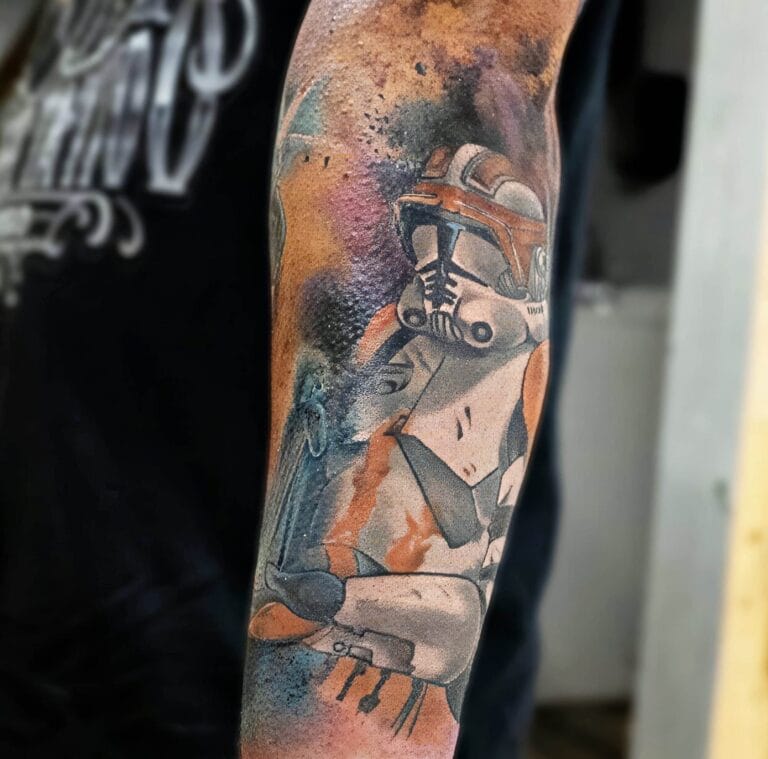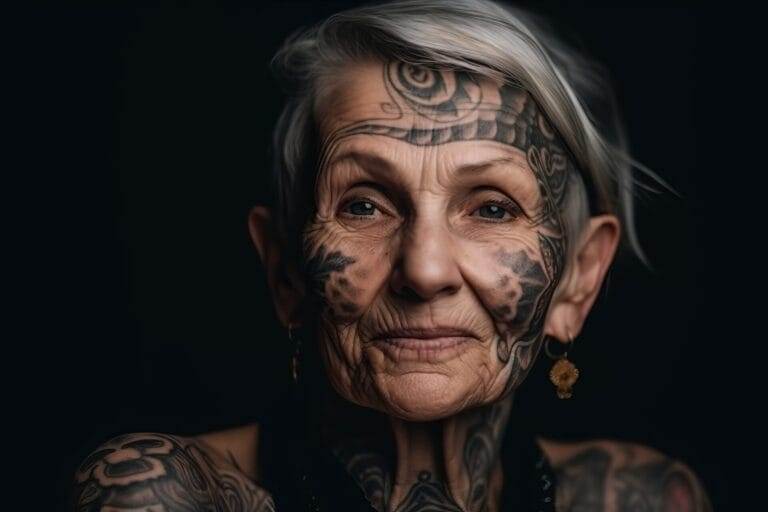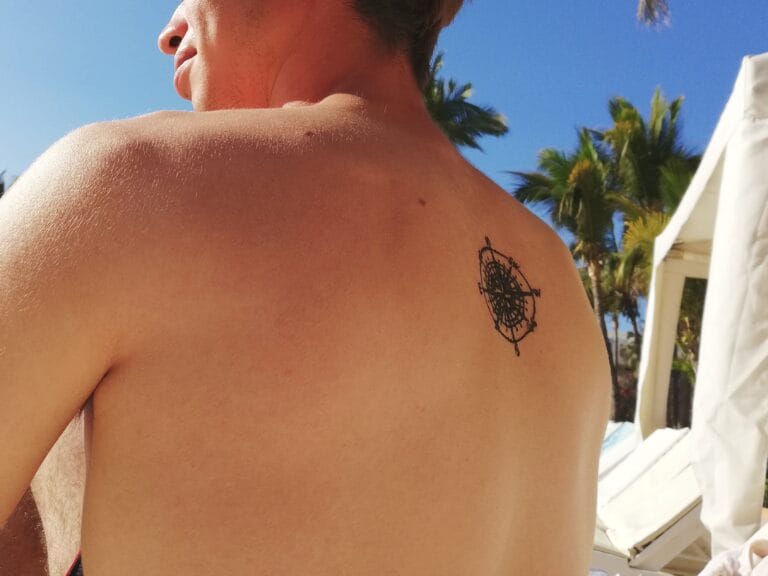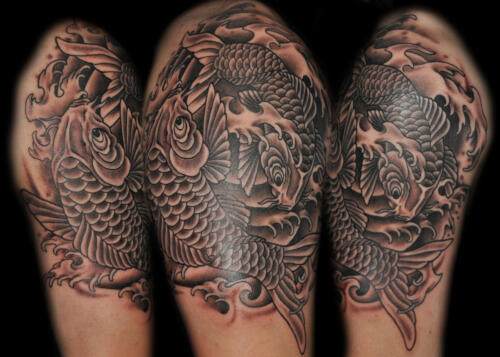
Introduction
Different Styles of Tattooing
Tattooing is not just a form of self-expression; it’s an art form that has evolved into diverse styles, each with its own unique characteristics. Understanding the different styles of tattooing can aid individuals in finding the perfect design that resonates with their personality and story.
- Traditional: Known for bold lines and vibrant colors.
- Realism: A sophisticated technique capturing lifelike details.
- Watercolor: Mimics the appearance of a watercolor painting.
- Minimalist: Focuses on simplicity with clean lines and sparse detail.
- Tribal: Features geometric designs rooted in cultural symbols.
Exploring these styles allows tattoo enthusiasts to make informed choices. Whether one is drawn to the boldness of traditional tattoos or the subtlety of minimalist designs, each style offers a glimpse into the wearer’s narrative and identity.
History of Tattoo Styles
Traditional Tattoos
Traditional tattoos have a rich history that dates back centuries, with roots in various cultures around the world. Often characterized by bold lines and vibrant colors, these tattoos typically feature iconic imagery, such as skulls, roses, and nautical themes. The designs often encapsulate significant meanings and symbolize various aspects of life or belief systems. Key features of traditional tattoos include:
- Bold outlines: Ensuring visibility and longevity.
- Limited color palette: Often featuring reds, greens, and yellows.
- Cultural symbolism: Reflecting the tattoo culture and heritage.
Modern Tattoo Styles
With time, tattooing has evolved into a diverse array of styles influenced by cultural shifts and artistic innovations. Modern tattoos are often experimental, merging techniques and aesthetics from various traditions. Noteworthy modern styles include:
- Realism: Capturing lifelike representations with exquisite detail.
- Geometric: Utilizing shapes and lines to create unique patterns.
- Watercolor: Offering a softer, colorful approach reminiscent of painting.
This evolution showcases how tattoos have transformed from cultural emblems into an adaptive form of art that expresses individuality and creativity.
Choosing Your Tattoo Style
When it comes to selecting a tattoo style, the options can feel overwhelming. However, understanding your preferences is key to making the right choice. Reflecting on personal identity, values, and aesthetics will guide you along the journey.
Consider Your Personality
Different styles resonate with different personalities. For instance:
- Bold Traditional: Ideal for those who appreciate classic art and strong symbolism.
- Minimalist: Perfect for individuals who favor simplicity and understated elegance.
- Watercolor: Great for creative spirits embracing vibrant, artistic flair.
Think About Longevity
It’s wise to consider not only the current trend but also how the tattoo will age over time. Styles like realism may require more touch-ups, while traditional pieces often maintain their appeal longer. Ultimately, your chosen tattoo should tell your story, embody your values, and reflect who you are—making the selection process both meaningful and fulfilling.
Understanding Cultural Influence
As tattoo styles have evolved, cultural influence has played a crucial role in shaping designs and techniques globally. Recognizing the origin of certain styles enriches one’s appreciation for the art form and fosters respect for cultural backgrounds.
Origin and Meaning
Many tattoos are steeped in tradition, often linked to rituals, rites of passage, or spiritual beliefs. For instance:
- Maori Tattoos: Known as Ta Moko, these are intricately designed and represent family heritage and social identity.
- Japanese Irezumi: Traditionally, this style features vivid imagery and tells stories of honor and resilience.
Respect for Heritage
When choosing a tattoo influenced by cultural practices, it’s essential to approach it with respect and understanding. Engaging with the culture before adopting its symbols can help bridge connections and avoid cultural appropriation. Ultimately, embracing these influences enhances the tattoo experience, making it richer and more meaningful.
Exploring Unique Tattoo Techniques
Within the world of tattoo art, various techniques set different styles apart, each contributing to the overall aesthetic and cultural significance of the design. Delving into these techniques can unveil new ways to express individuality through tattoos.
Innovative Techniques
From traditional methods to modern innovations, unique tattoo techniques offer diverse outcomes. Here are a few notable examples:
- Dotwork: Created using tiny dots, this technique results in stunning gradients and intricate designs, ideal for those seeking a unique texture.
- Blackwork: This style employs bold black ink, often using solid areas or patterns, providing a stark and powerful visual impact.
- 3D Tattoos: Utilizing shading and perspective, these tattoos give an illusion of depth, making the artwork appear lifelike.
Personal Preferences
Choosing a technique that resonates with personal style can elevate a tattoo from mere body art to a reflection of one’s identity. Engaging with artists who specialize in these techniques can also lead to collaboration and customized designs, ensuring that the tattoo is everything one envisions and more.
Embracing Minimalist Tattoo Designs
Minimalist tattoo designs have surged in popularity, appealing to those who appreciate simplicity and elegance. These tattoos often focus on clean lines, negative space, and subtle imagery, allowing for personal expression without overwhelming complexity.
Characteristics of Minimalist Tattoos

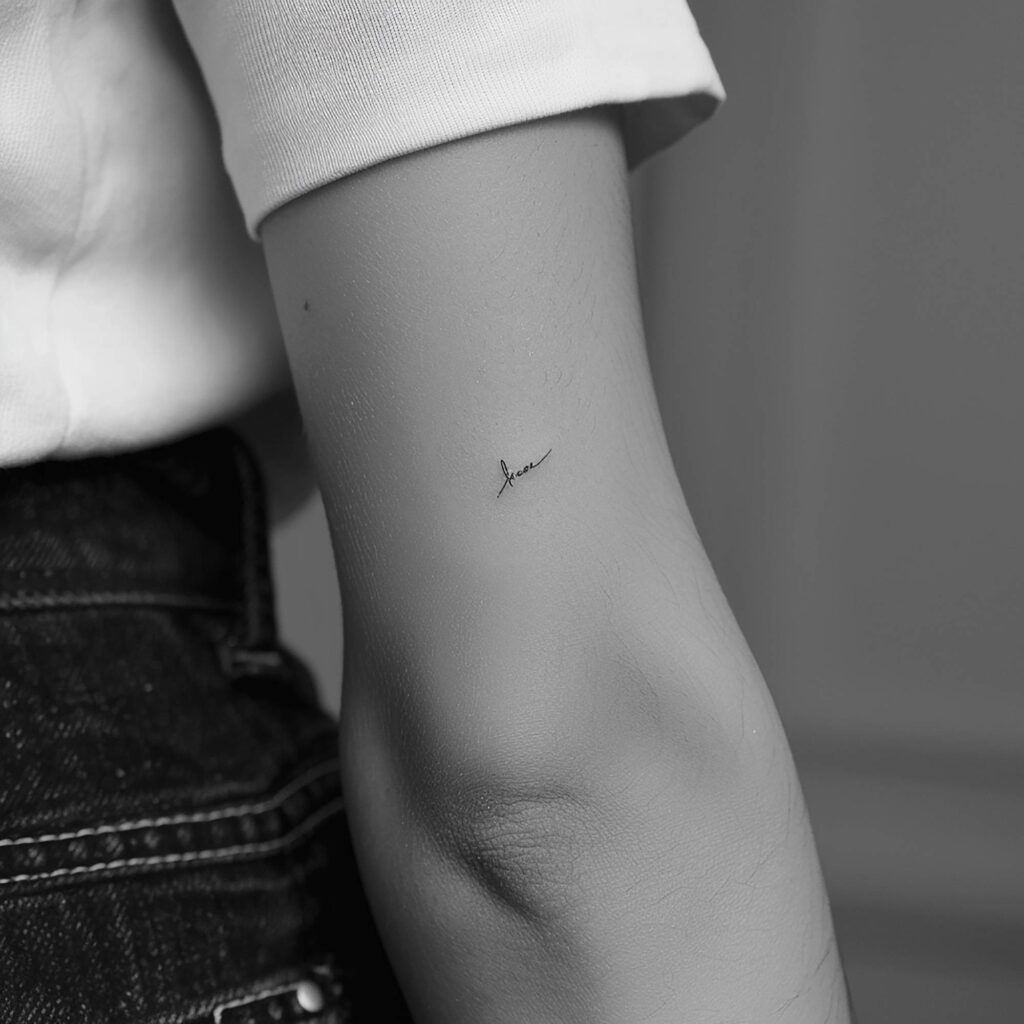
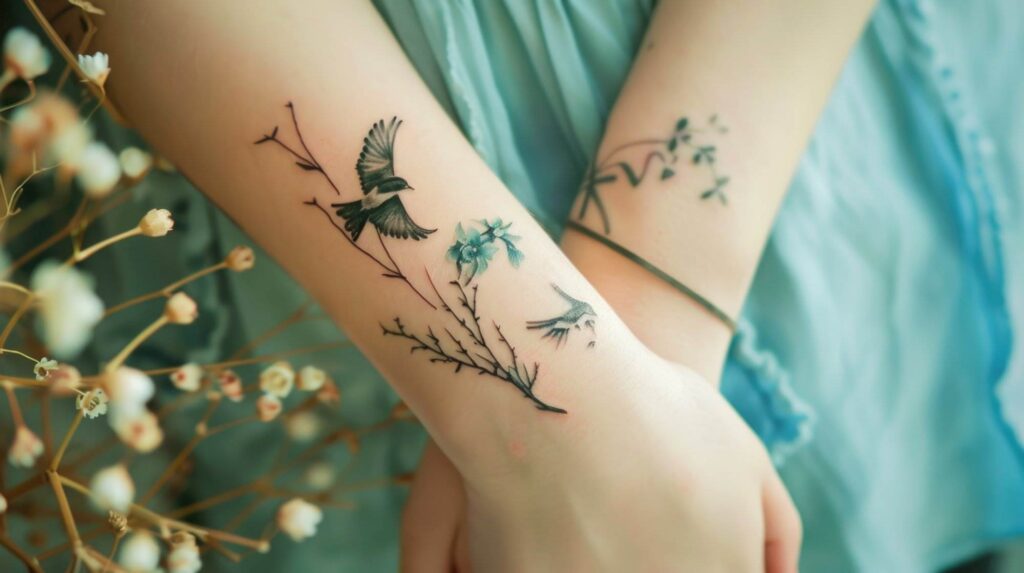
The beauty of minimalist tattoos lies in their understated charm. Key features include:
- Clean Lines: Sharp, precise outlines that create a crisp look.
- Sparse Detail: Focusing on essential shapes or symbols instead of intricate designs.
- Negative Space: Strategically leaving parts of the skin untouched to enhance the overall design.
Why Choose Minimalism?
People often gravitate toward minimalist tattoos for a variety of reasons. They can symbolize significant life moments, such as:
- Personal Growth: A simple symbol that holds deep meaning.
- Aesthetic Appeal: The ability to blend seamlessly into one’s style.
By embracing minimalist designs, individuals can express their stories in a profound yet subtle manner, showcasing that less can indeed be more.
Fusion of Different Styles in Tattoos
As tattoo culture continues to evolve, the fusion of different styles has become increasingly popular among enthusiasts. This creative melding of techniques not only showcases versatility but also allows individuals to create unique pieces that truly represent their identities.
Benefits of Style Fusion
Combining elements from various tattoo styles can yield captivating results. Here are some benefits of fusing styles:
- Personalization: Blending techniques creates a one-of-a-kind design tailored specifically to the wearer.
- Aesthetic Diversity: This approach can produce visually striking tattoos that combine the best features of multiple styles.
- Storytelling: Merging styles can convey complex narratives, allowing each element to express a facet of the wearer’s life or beliefs.
Popular Combinations
Some commonly fused styles include:
- Traditional and Watercolor: Bold lines with soft, flowing colors.
- Geometric and Realism: Sharp shapes complemented by lifelike details.
Ultimately, the fusion of styles invites creativity and exploration, enabling individuals to wear a tattoo that is not only beautiful but also deeply personal.
Importance of Artist Collaboration
In the world of tattoo artistry, collaboration between the client and the artist is essential for creating meaningful, personalized designs. This partnership not only enhances the artistic process but also ensures the final piece resonates with the wearer.
Building a Relationship
Establishing a rapport with the tattoo artist can facilitate open communication about design ideas, preferences, and inspirations. This conversation may include:
- Visual References: Sharing images or sketches that represent personal visions.
- Symbolic Meanings: Discussing what certain elements represent and how to incorporate them.
Benefits of Collaboration
The collaborative process offers several advantages:
- Tailored Designs: Artists can craft unique tattoos that reflect individual personalities and stories.
- Expert Insight: Experienced artists can provide valuable feedback on technical aspects or design feasibility.
Ultimately, artist collaboration embodies the heart of tattoo culture, merging personal expression with artistic expertise to create pieces that are both beautiful and meaningful to the wearer.
Finding Inspiration for Your Tattoo
After establishing a strong collaboration with your tattoo artist, the next vital step is finding inspiration for your tattoo design. The world around us is brimming with ideas that can spark creativity, allowing for a design that is truly unique.
Sources of Inspiration
When searching for tattoo inspiration, consider exploring various avenues, including:
- Nature: Flora, fauna, or natural landscapes can evoke powerful imagery and personal connections.
- Art and Literature: Artistic styles, literary quotes, or characters from favorite books can deeply resonate.
- Personal Experiences: Reflecting on significant life events, values, or beliefs might lead to powerful imagery.
Cultural Appropriation in Tattooing
As the tattoo community continues to grow, conversations around cultural appropriation have emerged, stressing the importance of understanding and respecting the origins of certain designs. Appropriating symbols without comprehension can lead to disrespect and the commodification of cultural heritage.
Understanding Cultural Significance
Many tattoo styles are deeply rooted in traditions and hold significant meaning within their originating cultures. For instance:
- Maori Tattoos (Ta Moko): Each design represents family lineage and personal history.
- Japanese Irezumi: Contains narratives of honor and typically symbolizes various virtues.
Approaching with Respect
To avoid cultural appropriation, consider these steps:
- Research the Symbols: Understand the history and meaning behind designs.
- Engage with the Culture: Speak to individuals from the culture or attend workshops to learn more.
By acknowledging and respecting cultural influences, individuals can ensure that their tattoo choices celebrate rather than exploit the rich traditions of others, leading to more meaningful expression in their body art.
Tattoo Trends Across Generations
Tattoo trends have evolved significantly over the decades, reflecting broader cultural shifts and generational preferences. What was once deemed rebellious has transformed into a mainstream form of self-expression, adapting to each era’s sentiments and aesthetics.
Defining Trends Through Decades
Tattoo trends have changed dramatically, with distinct characteristics illustrating each generation’s values:
- 1950s and 60s: Popularized by sailors and rebels, simple designs like anchors and pin-ups dominated.
- 1970s and 80s: The rise of bold, colorful tattoos emerged with punk and rock influences, leading to large back pieces and sleeves.
- 1990s and 2000s: Celebrities brought tribal and barbed wire designs to the forefront, symbolizing edginess and rebellion.
Current Trends and Influences
Today, the focus has shifted towards personalized minimalist designs, watercolor tattoos, and intricate line work. Social media plays a crucial role in amplifying these trends, showcasing global influences that inform contemporary styles. Understanding these generational trends provides vital context for the tattoo art’s evolution, allowing individuals to appreciate their chosen designs’ cultural relevance while celebrating their uniqueness.
Tattoo Styles Around the World
Tattooing is a global art form, each region bringing its unique influences and techniques to the forefront. Exploring various tattoo styles from different cultures provides deeper insight into their meanings and significance.
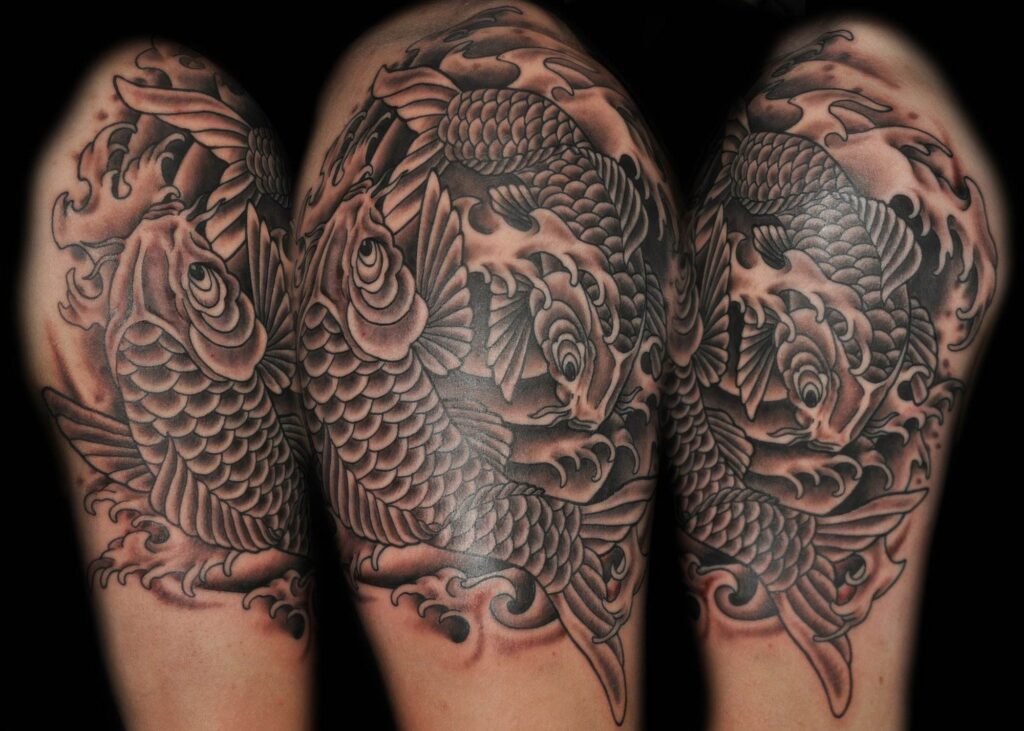
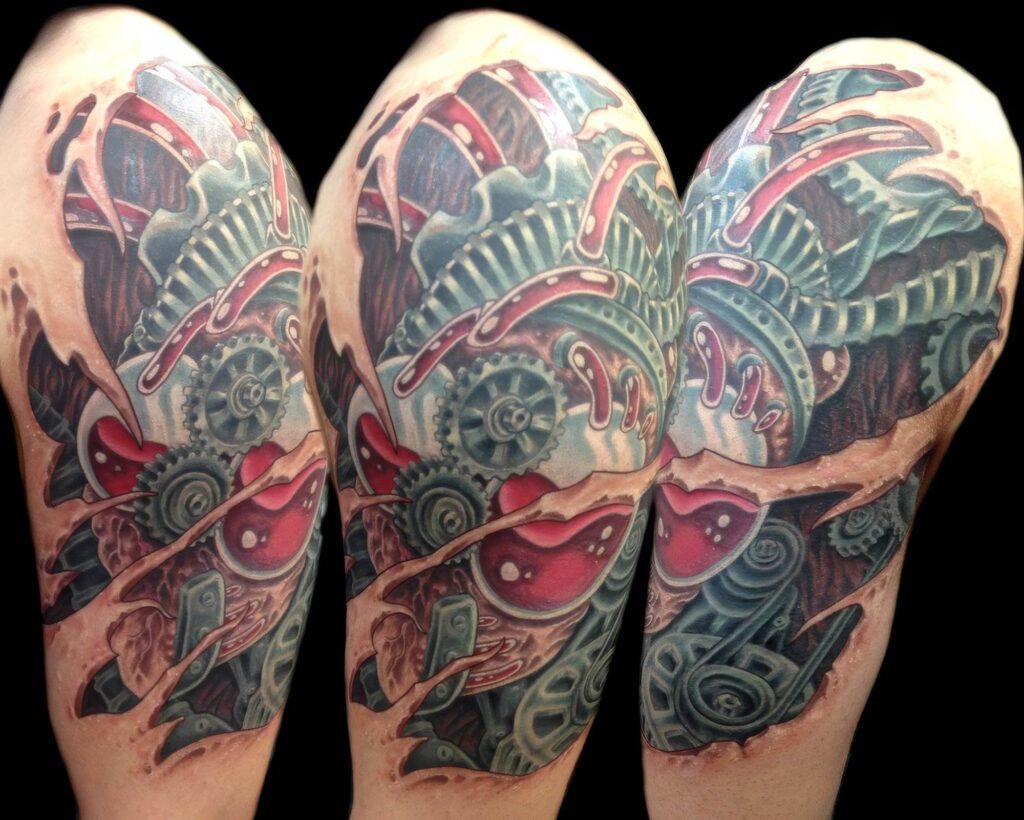
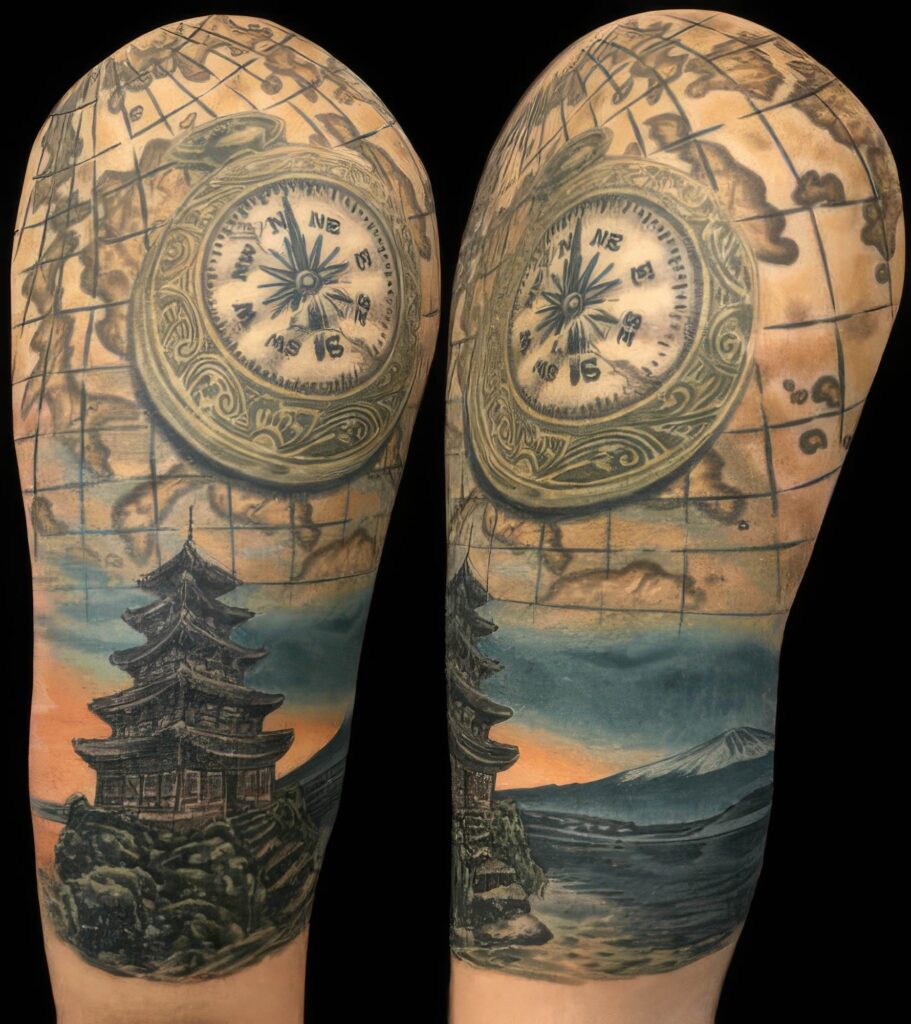
Regional Styles and Their Significance
Let’s take a look at some prominent tattoo styles from around the world:
- Polynesian: Known for intricate patterns that represent a person’s lineage and social status. Each design tells a story through symbols unique to the individual’s family.
- Japanese: Richly detailed, Japanese Irezumi tattoos often depict mythical creatures and nature, symbolizing virtues like courage and protection.
- Māori: The Ta Moko style involves deep grooves in the skin, intricately representing one’s ancestry and personal achievements.
Cultural Influence
Understanding these global styles enriches one’s appreciation for tattoos as art. By embracing the shared heritage of these techniques, individuals can celebrate diversity while choosing designs that resonate personally. Thus, tattooing becomes not just an art form, but a bridge connecting cultures across the world.
The Future of Tattoo Art
As we look ahead, the tattoo industry is poised for exciting developments fueled by technological advancements and evolving cultural perceptions. The future of tattoo art promises innovative designs and techniques that continue to push boundaries.
Technological Innovations
Emerging technologies are set to revolutionize the tattooing experience, including:
- 3D Printing: This could allow for more intricate designs and even temporary tattoos that mimic permanent ink.
- Augmented Reality (AR): AR applications may enable individuals to visualize how tattoo designs will look on their skin before committing.
Evolving Trends and Acceptance
Moreover, societal attitudes toward tattoos continue to transform, with increasing acceptance across diverse demographics. Trends like sustainable ink and tattooed skin care products showcase a growing interest in health and environmental considerations. As tattoo art continues to evolve, individuals will likely find more opportunities to express their identities through innovative and meaningful designs, solidifying tattoos as lifelong art forms that reflect personal narratives while embracing cultural evolution.
Expressing Personal Identity Through Tattoos
Tattoos have emerged as powerful symbols of personal identity, offering individuals a canvas to communicate their beliefs, experiences, and individuality. With each design chosen, wearers encapsulate significant aspects of their lives or aspirations.
Personal Narratives and Symbolism
Many people opt for tattoos that reflect:
- Life Milestones: Commemorating important events, such as anniversaries, births, or personal achievements.
- Core Values: Using symbols that represent beliefs, like courage or love, to serve as daily reminders.
- Cultural Heritage: Showcasing one’s background, such as traditional patterns or images that connect to their ancestry.
Artistic Freedom and Self-Expression
Ultimately, tattoos provide a unique form of self-expression that transcends conventional boundaries. As the world of tattoo art continues to grow, individuals have the opportunity to celebrate their uniqueness through creative designs, making tattoos not just body art, but profound statements of identity and belonging.
Conclusion
In conclusion, tattoos are much more than mere body art—they are rich forms of personal expression, steeped in culture and history. From understanding different styles and techniques to the significance of collaboration with artists, the tattoo experience is an important and transformative journey.
Celebrating Diversity and Meaning
Through this exploration, it becomes clear that:
- Cultural Awareness: Respecting the origins and meanings of tattoo styles fosters a deeper appreciation for this art form.
- Creative Evolution: The future of tattooing is marked by innovation, allowing for limitless creativity and self-expression.
- Personal Narratives: Each tattoo tells a story, mirroring the wearer’s life experiences, aspirations, and identity.
Ultimately, as individuals embrace tattoos as part of their narrative, they contribute to a vibrant tapestry of shared culture and personal storytelling, ensuring that this art form remains relevant and meaningful for generations to come.

